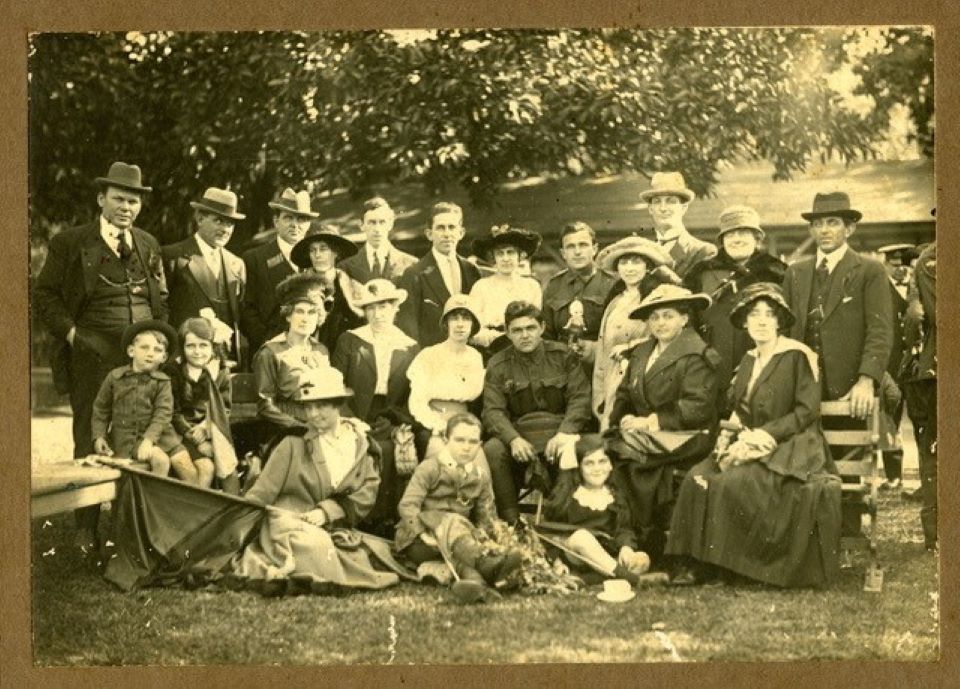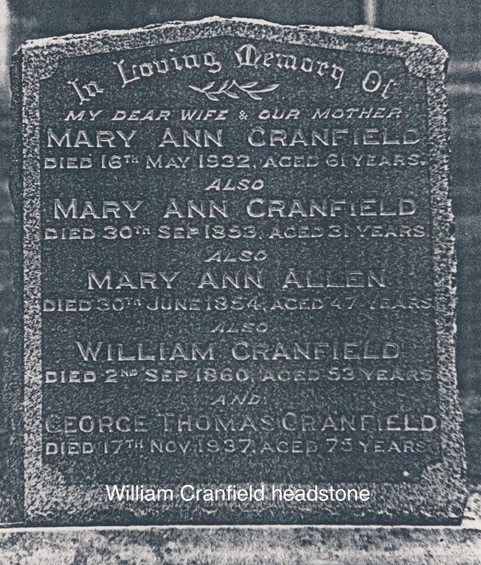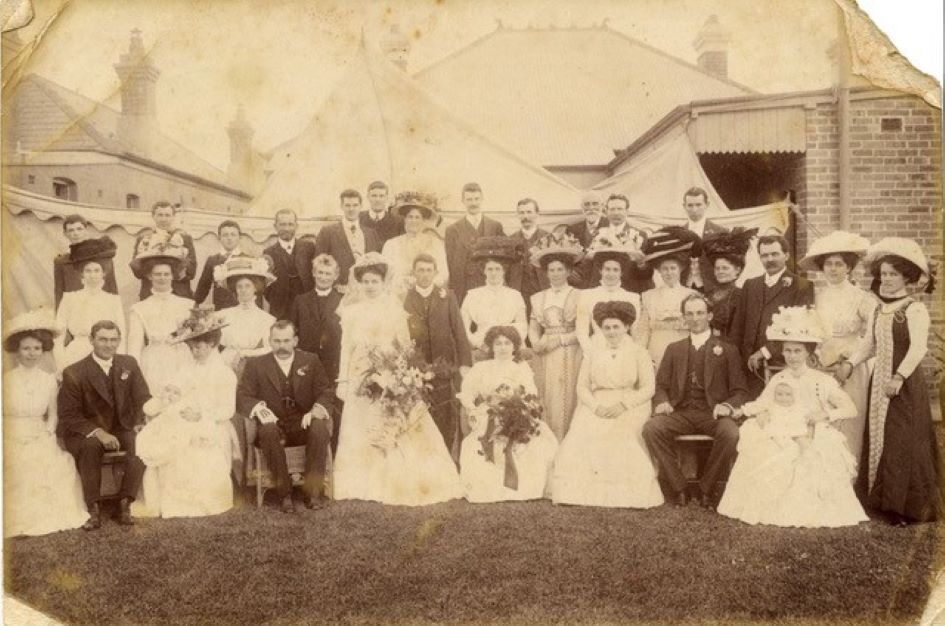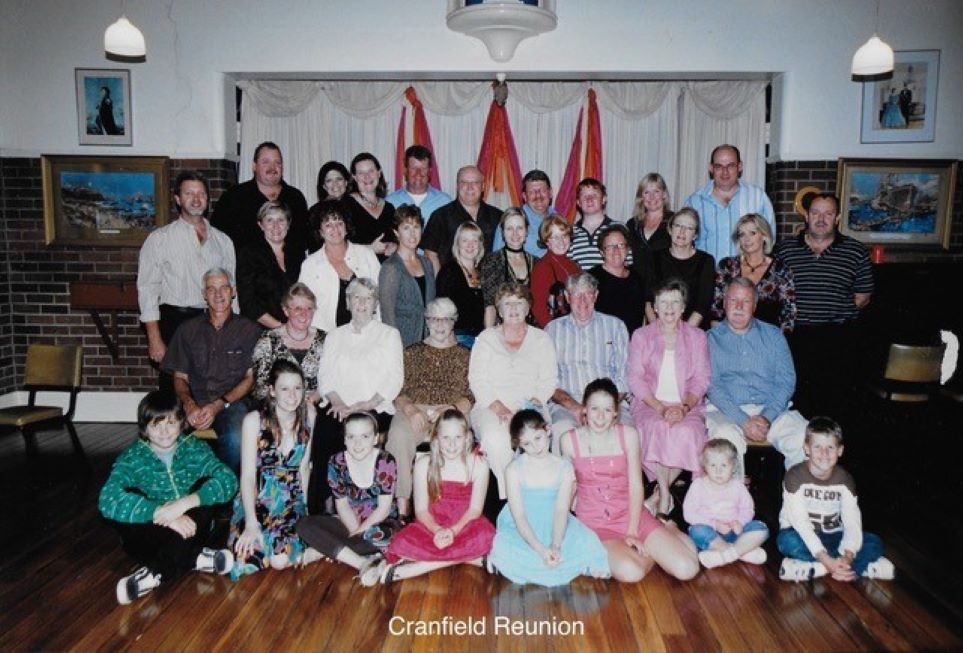

On October 27, the descendants of William Cranfield and his wives, Mary Ann Gittoes and Elizabeth (Bessie) Rourke (Rorke), will gather in Camden to celebrate the family’s 200th anniversary.
The ancient aboriginal lands of the Dharawal, Gundangara and Dharug peoples were named the Cowpastures by Governor John Hunter in 1795 and subsequently granted to John Macarthur for the raising of his merino sheep.
The Cranfield family connection with these lands including Narellan, Bringelly, Brownlow Hill, Camden, Cobbitty, The Oaks, Picton, Cawdor, and other surrounding areas, began in 1824 when a then 17-year-old William Cranfield stepped off the convict ship at Sydney Cove.
William had no idea what his future would entail in the unfamiliar surroundings he was to call home.
He could also never have envisaged that 200 years later, on that very day, his many descendants would gather at Camden to celebrate his successful life and legacies.
William was born on in 1807, baptised on August 7, 1808 and grew to just 1.6m with a ruddy complexion, grey eyes, and brown hair.
His parents: Walker and Susan Cranfield (nee Finch) were a farming family in Belchamp Walter, Essex and life was indeed harsh in poverty-stricken England.
Along with his siblings, Mary Ann, John, Charlotte and Susan, William would have toiled on the farm alongside their parents from a young age to help put food on the table.
There was very little opportunity for schooling and William, and like many of his peers at that time, could neither read nor write.
On December 10, 1823, at the age of just 16 and under the influence of much older and experienced criminals Thomas Wright (26) and Robert Bradnum (26), William and his co- conspirators broke into the house of Mr George Hickford at Glemsford, stealing a pig valued at 3 pounds, ¼ gallon cask of elder wine and a waistcoat and coat.
They were all jailed, then tried at the Suffolk Assizes at Bury St Edmonds on March 27, 1824. Thomas Wright and Robert Bradnum would eventually hang for their crimes.
While also condemned to death, William had his sentence commuted to seven years due to his tender age, which was later extended to the term of his natural life with transportation to Australia.
William was transported by horse and cart to Portsmouth on May 11, 1824 where he was imprisoned aboard the hulk York.

William worked hard, kept his head low and eventually departed aboard the 540 ton, 20-year-old ship Mangles on July 6, 1824, with 189 other prisoners under the control of Captain John Coghill as Master, and Surgeon Superintendent Mr Crockett.
Also on board were 57 members of the 40th Foot Regiment, who stood guard over them for the 106-day journey.
The ship sailed to the Canary Islands, Spain stopping briefly at the largest island, Tenerife, for a resupply of fresh food and left there on July 28 bound directly east across the Atlantic Ocean to the colony of New South Wales.
Mangles sailed safely into the magnificent harbour of Port Jackson on October 27, 1824 under sunny skies.
After the customary inspection of the ship, its cargo and the 190 prisoners by the government officials, the convicts were disembarked onto dry land on November 1.
According to convict muster records, William was first assigned to Lt. John Wild, previously of the 48th Regiment of Foot.
After his regiment left NSW for India in 1822, John resigned his commission and following his discharge in 1824 was made principal overseer of government stock at Cawdor.
He was also given a 2000-acre land grant on the banks of WerriBerri Creek (a Tharawal aboriginal name for the song of the Willie Wagtail) near the Oaks, halfway along the road between Picton and Camden.
At the time of William Cranfield’s arrival, John Wild was starting to utilise aboriginal and convict labour to establish his homestead and farm at Cawdor, in the county of Camden, which he named, Vanderville.
Wild farmed cattle, ran sheep and pigs, grew wheat and tobacco, and established a dairy – all of which would have involved Cranfield.
His daily rations, supplied by the government, consisted of sugar, tea, meat, and flour which they ground themselves to make bread.
Wild’s son, John Benton Wild Junior and family also lived at Vanderville and took over the farm on his parents’ deaths in 1834.
At some point, William Cranfield changed masters, and was assigned to Robert Crawford, esquire, clerk to the Colonial Secretary. His property called Milton was situated in Picton.
William Cranfield married Mary Ann Gittoes (Gittows) on July 6, 1835 at Cobbitty.
Mary Ann was the daughter of George Gittoes and Mary Ann Marshall. Young Mary Ann (9) and her brother William arrived in the colony free, accompanying their mother who was convicted of larceny and transported aboard the convict ship, Lucy Davidson in 1829.
In 1836, when William Cranfield was granted his ticket of leave, his master was stated as a Mr Coghill. It may have been John Coghill, captain of the convict ship Mangles that had brought William to Sydney Cove 12 years earlier, or his brother William Coghill, who both lived in the Wingecarribee district near Berrima on land that was granted to John Coghill in 1822.
John’s residence, Bedervale, as well as Strathallen which he bought in 1838 are properties that William Cranfield may have worked at in his time under assignment with the Coghill brothers.
With his ticket of leave passport, he was allowed to attend the Sydney markets for a 12-month period.
William and Mary Ann’s first child, Robert William was born at the Oaks, Camden in 1836 (D: 1918), followed by Mary Ann in 1838 (D:1864), Lucy Anne in 1839 (D: 1840) and George Henry in 1841 (D: 1913).
By 1841, William Cranfield had established his own farm, Spring Creek, at Mt Hunter, Camden.
He received his conditional pardon in February 1842.
Their fifth and sixth children: twins Susannah and Mary Ann were born in 1843 at The Oaks, Camden, (Susannah D:1904; Mary Ann D: 1902), as well as Thomas in 1846 (D: 1896), Elizabeth 1848 (D:1902) and Charles, at Razorback, Camden in 1850 (D:1830).
A daughter was stillborn in 1852, leaving eight children under 14 years for William and Mary Ann to raise.
Sometime before 1852, William became an innkeeper at Narellan.

Tragically, on September 30, 1852 Mary Ann passed this life and was buried at St Johns, Camden on October 2, 1852. She was only 32 years old with no opportunity to enjoy any of her 52 grandchildren that followed.
William then married Elizabeth (Bessie) Rourke, (Rorke) – an Irish girl from County Sligo, Ireland, at Newtown on June 25, 1853.
Bessie had emigrated as an assisted immigrant on the ship Inchinnan, arriving in Sydney on February 13, 1849 as 21-year-old.
Their marriage produced five children: Lucy Ann (1854-1933), William John (1855-1927), John (1857-1950), Joseph (1858-1947) and Charlotte Mary (1860-1929).
Just four weeks after Charlotte’s birth, William Cranfield was thrown from his horse one evening and tragically died from his injuries on September 2, 1860.
An inquest was held at Walter’s Inn, Camden the following day and William was buried at St John’s on September 4, 1860.
He was only 52 years old but left behind a large family of 14 children and many grandchildren.
As a tribute to William Cranfield and his extended family who made great contributions to the greater Camden communities over many decades, including serving on the first Camden Council, a street was posthumously named after him.
Bessie lived a busy family life, giving birth to 13 children, five with William and eight with William’s son George Henry Cranfield, whom she married in 1862.
She died at the family home Spring Creek on June 30, 1884 and was buried at St Johns, Camden the following day.
“There are still many descendants of William in the Camden district, and we hope that any publicity will also bring out additional relatives that we don’t have contact details for,’’ says Darren Tuohy, one of the organisers of the 200th anniversary gathering on the weekend of October 26-27.
“We have booked Barenz in Camden for a lunch time function. However, we are looking at planning other activities,’’ he said.
Email Darren at darren.tuohy8@gmail.com for more information or call him on 0417 440 307.

My name is Lloyd Hilder and my Great Great Grandmother is Mary Ann Gittoes and of course Willian Cranfield is my Great Great Grandfather.
My sister and brothers, Louise, John and Leigh Hilder are very interested in the Reunion.
Who is the contact for the reunion ?
darren.tuohy8@gmail.com